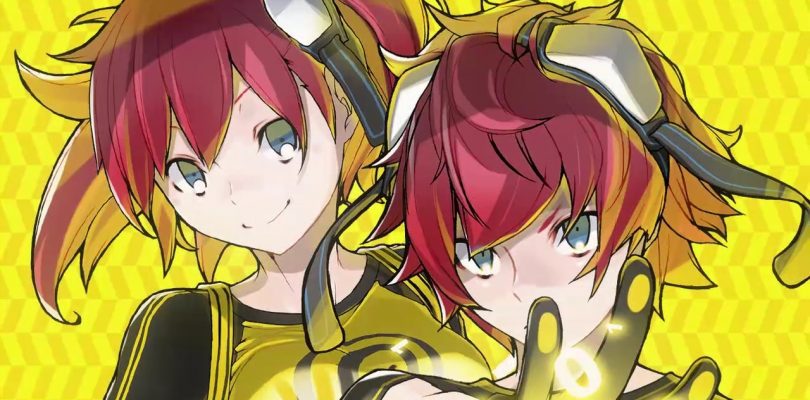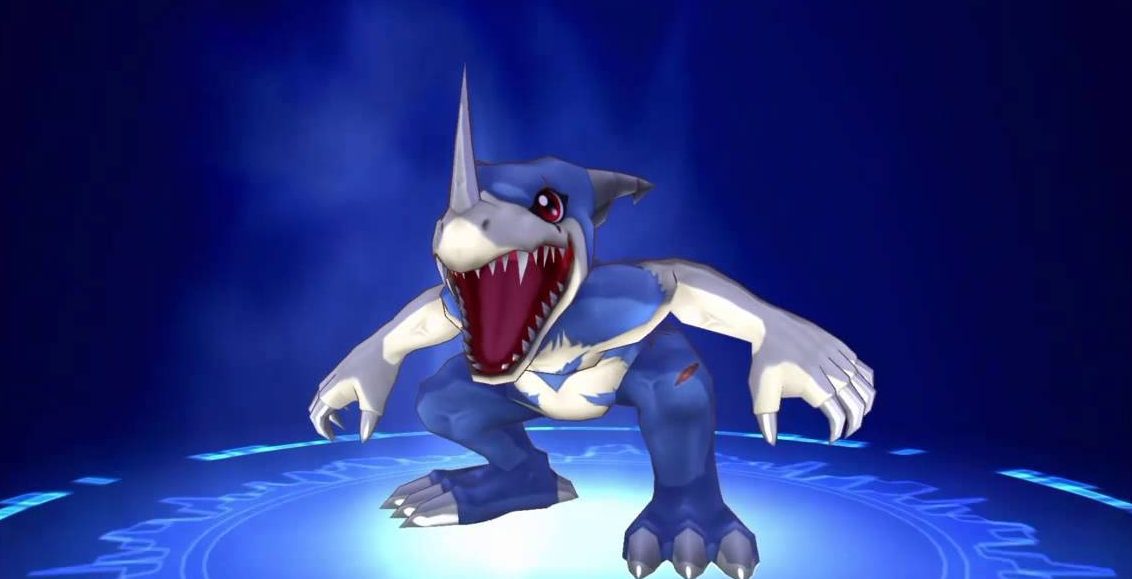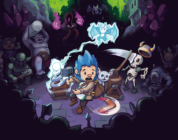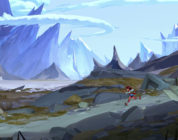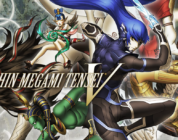During my moving trip from West Virginia to Alaska (more on that story later) by truck, I was given a lot of downtime to just hang out and play some games that I haven’t got to sink much time into. Pulling out my Vita, I flopped between Axiom Verge, a Metroid-style game that I reviewed a while back, and Digimon Story: Cyber Sleuth. After a few hours of wandering about in the world of Digimon, trying to remember where I left off, I started making progress. After about twenty hours, I can honestly say that Cyber Sleuth‘s addictive gameplay greatly trumps it’s poor story structure and dull narrative delivery, surprisingly making it a recommendation for fans of the series and those looking for a game to try that they may have missed.
Cyber Sleuth is one of those rare games that from the outset had me invested just with its brand. Digimon was a huge part of my childhood and I’ve even started studying the merits of the anime as an adult. As an aside, Season 3, otherwise known as Digimon Tamers, is definitely worth revisiting. Thus, getting the chance to raise Digimon in a traditional turn-based RPG was enough to get me giddy when the game launched in February of last year.
I had rented Cyber Sleuth on PS4 for a few days, loving its battle presentation and the care put into each Digimon, but I wasn’t invested enough in the story to play it any further. I later bought it on Vita and that’s where it sat on my home screen for several months. Since it was already installed to my Vita, it was the perfect game to lose myself in and unwind from traveling. It wasn’t long into my latest play-session that I began to figure out the game’s systems, which led me to evolving more powerful monsters and seeing some familiar faces. I was hellbent on getting my favorite Veedramon to his Ultimate form and seeing what his Mega form was like. That drive to find my favorite Digimon led me down the rabbit hole of grinding for hours upon hours with the game. Somehow, it never got stale.
At its core, Cyber Sleuth has a simple combat system that relies on type advantage as well as knowing the elemental attributes. This creates a web of effectiveness that feels like a combination of Fire Emblem and Pokemon. This is all presented in a snazzy art style that even uses the red outlines popularized by the amazing Digimon: The Movie, which was a style later used in Summer Wars. Each special move was lovingly recreated, capturing that dynamic pose or battle cry from the anime. This makes it one of the best experiences for long-time fans of the show.
Aside from learning what each Digimon is capable of, equipment can be added for more effects and Digimon can De-Digivolve to increase their overall effectiveness. The act of Digivolving is incredibly addictive, as there are branching paths that can lead into some awesome transformations. Of course, each of these transformations have their own requirements before being able to change into them. This created a sort of puzzle that sparked me to learn just how this game operated and I was rewarded with ridiculously powerful party members for my efforts.
Of course, the game’s narrative isn’t nearly as interesting as the game’s combat systems. Cyber Sleuth fits into the tropes of the flood of RPGs that have been on the Vita of late, complete with visual novel style scenes and small environments. The story is moved forward by completing tasks as a Cyber Sleuth, a kind of highly skilled private investigator. I do have to admit that the overall concept and setting is interesting. Our hero’s body became half digital after a run in with an enemy called an Eater, which allows him to dive into digital terminals and such. It reminds me a lot of the Mega Man Battle Network series in that regard.
Unfortunately, most of these missions boil down to talking to an NPC, only to go back to the bureau and then go back to that same NPC. This is made all the worse with the small environments that offer almost no exploration. This also appears in the game’s dungeon designs, which are usually glorified hallways that all have a similar aesthetic. If not for the battle system and the Digimon brand, this could have been pegged as one of the worst RPGs in my recent memory.
This brings me to my analysis and recognition of the game’s importance to players and developers.
Most traditional RPGs rely on two elements to sustain them, story and gameplay. When either side is weak, it brings down the whole project exponentially, leading to a need for balance. However, in this case, the gameplay in Cyber Sleuth was vastly superior to its story and was enough to keep me playing. This has me thinking that if a development team is put in a position where one element is to suffer, they should probably focus on making their best side stronger, rather than seeking balance. For example, if the deadline is approaching and that time and money was going to be put into revising the game’s story script, it may be a smarter decision to spend those same resources perfecting the game’s combat.
Too often, I’ve seen potential wasted on the Vita by the vastness of RPGs on the system. Sure, every game will have its fans, but there’s definitely a lesson to be learned from a game like Cyber Sleuth.
Let’s hope Digimon gets another chance at having a truly great RPG made with its brand. I’ll be waiting patiently for Digimon Story: Cyber Sleuth – Hacker’s Memory when its localized sometime next year.

